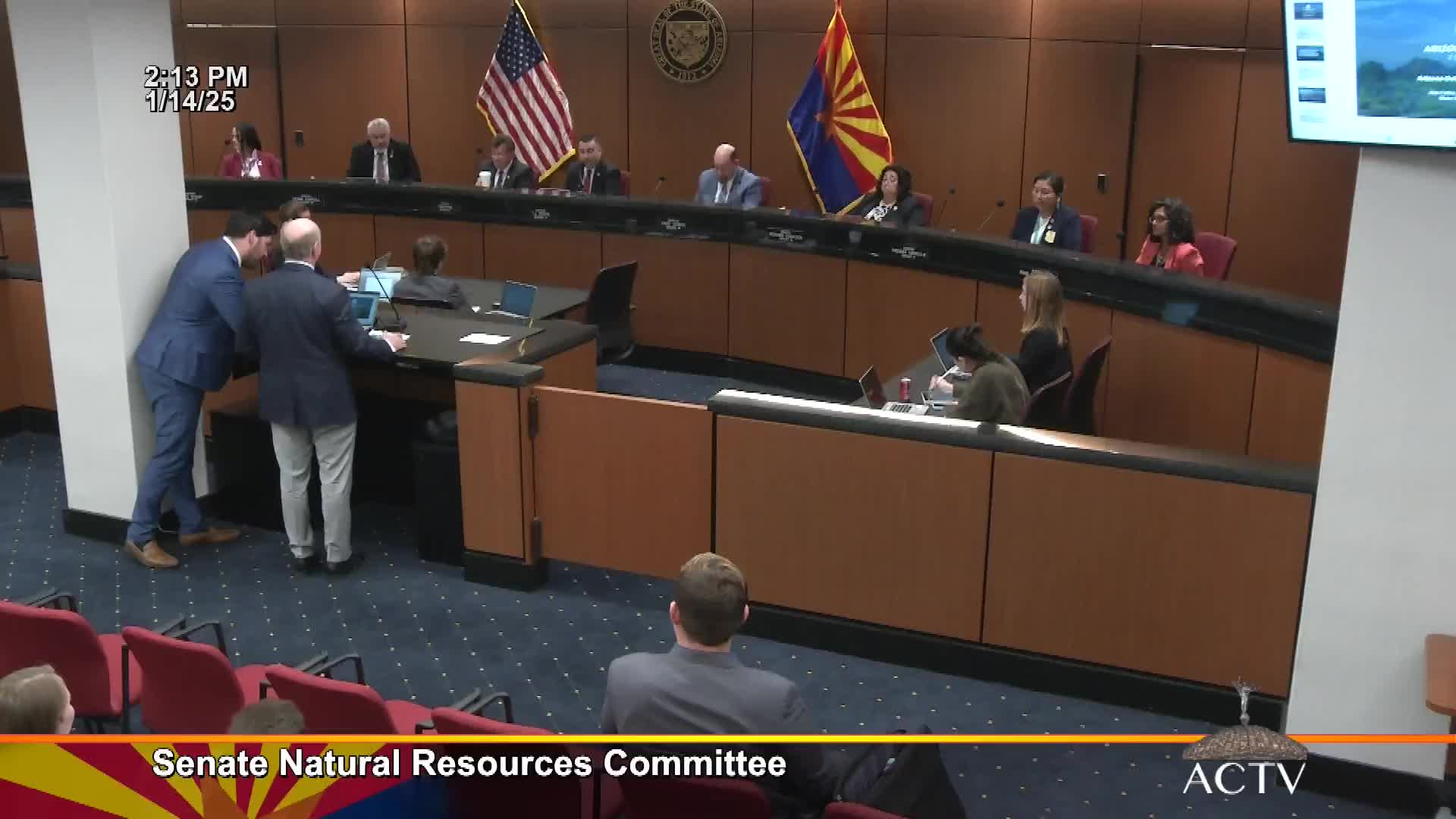Arizona Alliance for Golf tells legislature courses use about 2% of state water, cites $6 billion economic impact
January 14, 2025 | 2025 Legislature Arizona, Arizona
This article was created by AI summarizing key points discussed. AI makes mistakes, so for full details and context, please refer to the video of the full meeting. Please report any errors so we can fix them. Report an error »

Rob Collins, water policy chairman for the Arizona Alliance for Golf, told the Senate Natural Resources Committee that golf supports tourism and jobs in Arizona while accounting for a modest share of total water use.
“We have a huge economic impact, $6,000,000,000 annually,” Collins said, and he added that about half of that impact is from out‑of‑state visitors. He told the committee the industry reaches children with outreach programs and supports about 66,000 jobs statewide.
On water use, Collins said golf-course turf accounts for roughly 2% of total water use in Arizona. “So, it's certainly efficient in terms of economic impact,” he said. He estimated there are “approximately 300 golf courses” in the state and said many courses already use reclaimed water where infrastructure allows, though he did not provide a precise statewide reclaimed‑water count.
Collins said the Groundwater Act of 1980 — reflected in Arizona Department of Water Resources planning — limited golf‑course allocations historically by acreage, and he told the committee that the ADWR fifth management plan extended the 90‑acre allocation limit to older courses that had previously been exempted.
Committee members asked follow-up questions about how many courses use reclaimed water, where older courses face conversion obstacles, and whether golf’s open space value should be weighed against water conservation priorities. One senator who grew up in an area that has lost courses said courses closing raised concerns about water and future use of those properties.
Collins asked to follow up with specific reclaimed‑water numbers and said a limiting factor for more conversions is the availability of reclaimed‑water infrastructure near courses. The committee did not take formal action on the presentation.
“We have a huge economic impact, $6,000,000,000 annually,” Collins said, and he added that about half of that impact is from out‑of‑state visitors. He told the committee the industry reaches children with outreach programs and supports about 66,000 jobs statewide.
On water use, Collins said golf-course turf accounts for roughly 2% of total water use in Arizona. “So, it's certainly efficient in terms of economic impact,” he said. He estimated there are “approximately 300 golf courses” in the state and said many courses already use reclaimed water where infrastructure allows, though he did not provide a precise statewide reclaimed‑water count.
Collins said the Groundwater Act of 1980 — reflected in Arizona Department of Water Resources planning — limited golf‑course allocations historically by acreage, and he told the committee that the ADWR fifth management plan extended the 90‑acre allocation limit to older courses that had previously been exempted.
Committee members asked follow-up questions about how many courses use reclaimed water, where older courses face conversion obstacles, and whether golf’s open space value should be weighed against water conservation priorities. One senator who grew up in an area that has lost courses said courses closing raised concerns about water and future use of those properties.
Collins asked to follow up with specific reclaimed‑water numbers and said a limiting factor for more conversions is the availability of reclaimed‑water infrastructure near courses. The committee did not take formal action on the presentation.
View full meeting
This article is based on a recent meeting—watch the full video and explore the complete transcript for deeper insights into the discussion.
View full meeting
